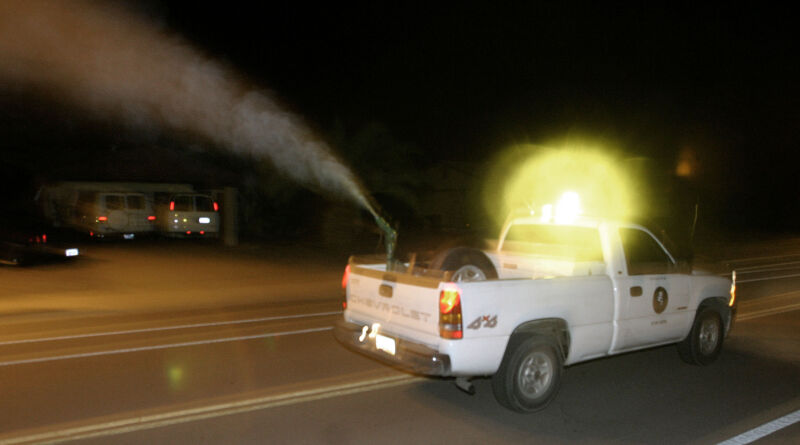
As the COVID-19 pandemic raged across the country in the summer of 2021, another virus—an endemic spread by mosquitoes—struck residents of an Arizona county, sparking a record-breaking outbreak which killed 101 people, according to a study published today by Arizona health officials.
The virus is West Nile, which persists in hundreds of bird species in the US and spreads to humans through mosquito bites. Most people who are infected—about 8 in 10—have no symptoms. But the bad luck that remains will form a nondescript sickness with fever, headache, body aches, joint pain, vomiting, diarrhea, or rash. Fatigue and weakness from a symptomatic case can last for weeks to months. A small fraction of symptomatic cases will develop a serious, life-threatening neuroinvasive condition, such as meningitis or encephalitis.
West Nile Virus (WNV) was discovered in the US in 1999 and was first identified in Arizona in 2003, when only 12 cases were recorded. Since then, the state annual total are often around 100 cases, with Maricopa County always claiming the lion’s share. The outbreak record was set in 2004, soon after its discovery. That year, the state saw 391 cases, 355 of which were from Maricopa.
But, in the shadow of the coronavirus Delta wave in the summer of 2021, Maricopa’s WNV outbreak reached 1,487 symptomatic cases—breaking the 2004 record by more than four times. This is the largest WNV outbreak ever recorded from any county in the country. However, the recorded number in Maricopa is likely a severe undercount.
Along with outbreaks
Of the 1,487 who became ill, 1,014 (68 percent) were hospitalized and 956 (64 percent) developed neuroinvasive disease. All 101 deaths occurred in those with neuroinvasive disease. The median age of all cases was 66, and the median age of those who died was 79. There were an additional 78 asymptomatic infections found during routine screening of blood donations.
The large proportion of neuroinvasive cases in the outbreak indicates that a very large number of cases are not recorded. Previous case estimates indicate that for every one neuroinvasive case, there are between 30 to 70 non-neuroinvasive symptomatic cases. That would put the total number of cases between 28,700 and 67,000 in the county, which has a population of approximately 4.5 million.
It’s unclear what sparked the massive outbreak. But this is likely to be explained by a combination of factors. Arizona health officials think it may be related to increased rainfall, rising temperatures that are lengthening the WNV season in Arizona, recent population growth and housing development in Maricopa, and behavioral changes in seeking health care during the COVID-19 pandemic.
But awareness of WNV and the outbreak—among residents and health care providers—appears to be inadequate, indicating that officials have more outreach and knowledge work to do. This is particularly important during times of high prevalence. While the COVID-19 pandemic appears to be exacerbating the WNV outbreak, WNV has also worsened the COVID-19 response, sending 1,014 people to already overwhelmed hospitals. Health facilities anecdotally reported to officials that there were times when intensive care units reached capacity, half filled with COVID-19 cases and the other half with WNV. However, overall, the burden of WNV has weakened compared to that from COVID-19 in the county, which saw more than 19,600 COVID-19 hospitalizations during the same period in 2021.
With both viruses here to stay, Arizona officials are working on ways to improve responses. “Reviews are being conducted to identify data limitations for increased public and provider messaging on prevention, evaluation, and testing,” they wrote. “Timely and coordinated surveillance of mosquito and human cases is critical in identifying outbreaks and guiding prevention efforts.”
